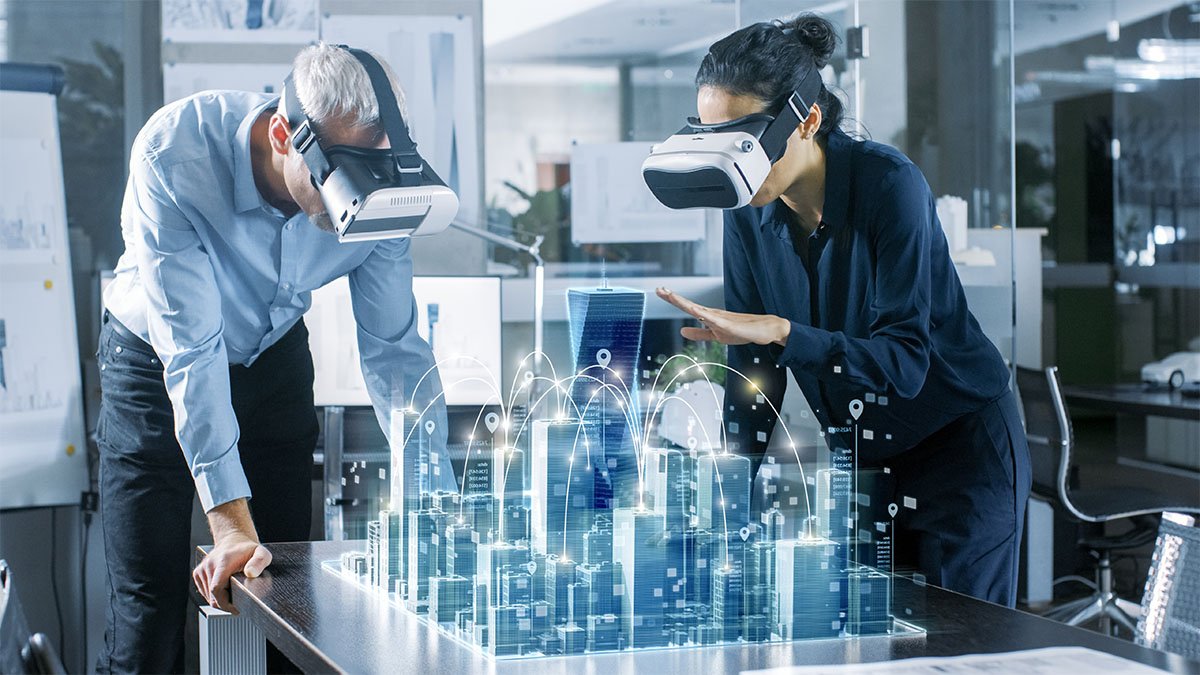The metaverse is at the top of the list of daring new tech concepts from last year. The notion quickly gained fans and opponents due to the fact that it asked more questions than it answered. If you haven’t already chosen aside, it’s time to learn more about the metaverse: is it sophisticated virtual reality or something entirely new? Is it possible to imagine it without VR/AR?
AR &VR are technology for development with advancements that are now gaining traction and have the potential to completely change how consumers engage with businesses and their products and services.
Defining the Metaverse
The metaverse is a virtual world where individuals may connect with one another using various technologies. A mix of physical hardware and software is used to accomplish this. The concept’s vision differs from business to company, but what they all have in common is a network of real-time generated 3D worlds that a big number of people may plunge into at the same time.
The metaverse is envisioned as a virtual environment in which you may work, learn, interact, rest, and attend virtual concerts, among other things.
Much of the metaverse is linked to the digital economy, where users may purchase and sell things in the same way they do in the real world, and this influences brand interest in the metaverse. Because modern individuals spend so much of their time online, advertising things on virtual platforms such as the metaverse may be a wonderful method for businesses to raise income.
Is AR/VR Necessary in the Metaverse?
Artificial intelligence (AI), augmented reality (AR), and virtual reality (VR) are all strongly tied to the concept of the metaverse (VR). Virtual Items may be embedded in the actual environment using augmented reality technology. VR is immersing oneself in a 3D virtual environment using 3D computer modeling, one of the most fascinating styles of graphic design.
The Facebook metaverse, for example, is expected to be accessible via virtual reality headsets, smart glasses with augmented reality, and restricted desktop and mobile applications.
The combined AR/VR industry is estimated to reach up to $300 billion by 2024, according to Statista, and $100 billion by 2030, according to Morgan Stanley.
Use Cases of AR/VR Technologies for the Metaverse
Most people identify the metaverse with gaming, but the metaverse’s founders’ overall objective is to transform how people interact with the Internet, thus there might be many more applications. So far, the gaming sector has been the first to reap the benefits of virtual ecosystems introduction.
Advertising, tourism, education, entertainment, retail, design, engineering, and many more businesses will benefit from the metaverse. Any action in the physical world has the potential to spread into the metaverse.
We’ve already suggested virtual office space, which may take on a different look as the metaverse evolves. Unlike Zoom and Skype, which we are familiar with, this technology reinforces the sense of the whole team being there in one location.
While the sites above have capabilities like picture masking, which allows you to modify the background of a meeting, the metaverse goes even farther. It provides 3D-generated avatars to represent you in virtual meetings based only on your motions and facial expressions.
Similar use cases are currently available on the market. Virtuworx is a virtual reality and mixed reality business that provides tailored solutions for offices, virtual meetings, and other events.
Future of the Metaverse with AR/VR technology
The metaverse appears to be a lot of fun, but it’s impossible to say what the future holds for it right now. Probably, the advancement of 5G and the increased interest in VR/AR technology for development would create ideal conditions for something like this to be developed. However, the metaverse’s designers will confront several hurdles.
One of them is the interoperability of digital things, which is crucial in the metaverse’s construction. When acquiring a digital object in the metaverse, you must ensure that you own the rights to it and that you may use it across the whole virtual ecosystem, not just in a single game or on a single platform.
The metaverse requires real-time data synchronization, which can be difficult and expensive at scale. The metaverse will have to handle high levels of traffic and transmit quality data while satisfying the individual security demands of each user, posing a new challenge for organizations that provide data synchronization services.
Because the metaverse is highly reliant on virtual and augmented reality, the future of AR/VR enterprises appears to be bright. Businesses that plan to develop AR apps or include virtual reality elements have a good chance of meeting market demand. The worldwide VR industry is estimated to reach $184.66 billion by 2026, according to Mordor Intelligence.
Conclusion
According to predictions made by computer enthusiasts, the metaverse will be a new phase in the evolution of the Internet, dissolving barriers and allowing us to fully immerse ourselves in the digital world. Because virtual reality and augmented reality play such an important part in the creation of metaverses, the industry is expected to rise rapidly in the future years.
If the metaverse is a virtual space, then virtual reality is a means of accessing it. If you want to use AR/VR technology you must contact a reliable mobile app development company.
VR’s capabilities, on the other hand, are often restricted by current gear, which is both expensive and inconvenient for long-term use. AR, on the other hand, has become a go-to technology for the large-scale growth of the metaverse because of current smartphones, which have made it available to billions of people.




